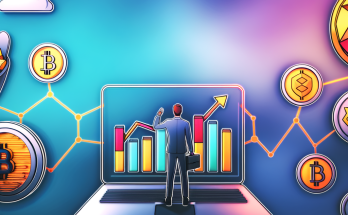Global inflation is reshaping the financial landscape, affecting investments and strategies worldwide. According to the International Monetary Fund (IMF), global inflation reached 8.8% in 2022, the highest level in decades, prompting investors and financial planners to reassess their approaches.
The Current State of Global Inflation
The world economy is experiencing unprecedented inflationary pressures. The World Bank reports that inflation rates in emerging markets and developing economies have reached their highest levels since 2008. This surge is attributed to several factors:
1. Supply chain disruptions
- Increased energy costs
- Labor shortages
- Expansionary monetary policiesThese elements have combined to create a perfect storm of rising prices across various sectors. As a result, central banks worldwide are implementing tighter monetary policies to curb inflation, which in turn affects investment strategies.
How Inflation Impacts Different Asset Classes
Inflation doesn’t affect all investments equally. Understanding its impact on various asset classes is crucial for developing robust financial strategies:
1. Stocks: Generally, stocks can provide a hedge against inflation, especially those of companies with pricing power. However, high inflation can lead to increased interest rates, potentially reducing stock valuations.
2. Bonds: Fixed-income securities typically suffer during inflationary periods as their fixed payments become less valuable in real terms.
3. Real Estate: Property investments often perform well during inflation, as real estate values and rents tend to rise with overall price levels.
4. Commodities: Raw materials like gold, oil, and agricultural products often see price increases during inflationary periods, making them attractive inflation hedges.
5. Cash: Holding cash during high inflation periods can lead to a loss of purchasing power over time.
Understanding these dynamics is essential for investors looking to protect and grow their wealth in an inflationary environment.
Strategies for Investing During Inflationary Periods
To navigate the challenges posed by global inflation, consider the following investment strategies:
1. Diversification: Spread investments across various asset classes to mitigate risks.
- TIPS (Treasury Inflation-Protected Securities): These government bonds adjust with inflation, providing a safeguard against rising prices.
- Real Estate Investment Trusts (REITs): These can offer exposure to inflation-resistant real estate markets.
- Commodity-linked investments: Consider ETFs or stocks in companies that produce commodities.
- Value stocks: Companies with strong cash flows and low debt may outperform during inflationary periods.It’s important to note that no single strategy is foolproof, and a combination of approaches may be necessary depending on individual financial goals and risk tolerance.
The Role of Global Economic Policies
Central banks and governments play a crucial role in managing inflation. Their policies can significantly impact investment landscapes:
– Interest rate adjustments: Higher rates to combat inflation can affect bond yields and stock valuations.
- Quantitative easing: This can lead to currency devaluation and potentially higher inflation.
- Fiscal policies: Government spending and taxation decisions influence economic growth and inflation rates.Investors should stay informed about these policies and their potential impacts on various asset classes. For more information on global economic policies, visit the World Bank’s official website here.
Adapting Personal Financial Strategies
Inflation doesn’t just affect investments; it impacts overall financial planning. Here are key considerations for adapting personal financial strategies:
1. Emergency funds: Ensure savings accounts keep pace with inflation to maintain purchasing power.
- Debt management: Consider the impact of rising interest rates on variable-rate loans.
- Salary negotiations: Factor in inflation when discussing raises or job offers.
- Budgeting: Regularly review and adjust budgets to account for rising costs.
- Long-term planning: Reassess retirement and other long-term financial goals in light of inflationary pressures.These adjustments can help individuals maintain financial stability and progress towards their goals despite inflationary challenges.
The Global Nature of Modern Investments
In today’s interconnected world, inflation in one region can have ripple effects across global markets. This interconnectedness presents both challenges and opportunities for investors:
– Currency fluctuations: Inflation can lead to currency devaluations, affecting international investments.
- Global supply chains: Inflationary pressures in one country can impact production costs worldwide.
- Emerging market opportunities: Some developing economies may offer growth potential despite global inflationary trends.Understanding these global dynamics is crucial for making informed investment decisions. For more insights on global market trends, check our article on international diversification strategies here.
Technology and Inflation: New Tools for Investors
Advancements in financial technology are providing new ways to manage investments in inflationary environments:
1. Robo-advisors: Automated platforms that can quickly adjust portfolios based on economic indicators.
- Blockchain and cryptocurrencies: Some view these as potential hedges against inflation, though they come with high volatility.
- Data analytics: Advanced tools for analyzing economic trends and making data-driven investment decisions.While these technologies offer new opportunities, it’s important to approach them with caution and thorough research.
Environmental Factors and Inflation
Climate change and environmental policies are increasingly influencing global inflation and investment strategies:
– Green energy transition: This shift can lead to short-term inflationary pressures but may offer long-term investment opportunities.
- Carbon pricing: Policies aimed at reducing emissions can impact production costs across industries.
- Sustainable investing: ESG (Environmental, Social, and Governance) factors are becoming crucial in assessing long-term investment viability.These factors highlight the need for investors to consider environmental trends in their inflation-adjusted strategies.
Conclusion: Navigating the Inflationary Landscape
Global inflation presents significant challenges for investors and financial planners. However, with careful strategy and informed decision-making, it’s possible to navigate these turbulent waters successfully. Key takeaways include:
– Diversify investments across various asset classes
- Stay informed about global economic policies and trends
- Regularly review and adjust personal financial strategies
- Consider the impact of technology and environmental factors on investmentsAs you adapt your financial approach to the current inflationary environment, remember that personalized advice from financial professionals can be invaluable. We encourage you to share your thoughts and experiences with inflation’s impact on your investments in the comments below.
For more detailed guidance on crafting inflation-resistant investment strategies, consider scheduling a consultation with our financial advisors here. Together, we can develop a plan tailored to your unique financial goals and risk tolerance in this challenging economic landscape.


